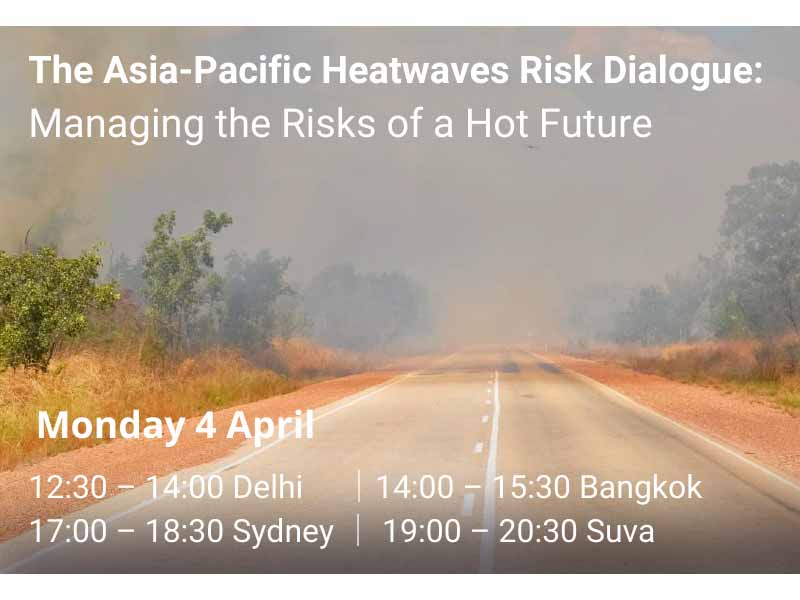
UNDRR Webinar-The Asia-Pacific Heatwaves Risk Dialogue: Managing the Risks of a Hot Future
4 Apr 2022
The United Nations Office for Disaster Risk Reduction (UNDRR) organised an online webinar to present some of the key findings and recommendations from the latest UNDRR report, Heatwaves: addressing a sweltering risk in the Asia Pacific. Here is a brief summary for the adaptation responses and six recommendations on related policy and research directions from the webinar.
Heatwaves: Adaptation Responses
Adaptation repsonses include:
- Early warning systems with action plans;
- Access to cooling and water;
- Altering patterns of work and activity, altering clothing;
- Enhance health-surveillance;
- Infrastructure (including green) solutions;
- Integrated system approaches;
- Engagement and co-design of solutions.
Policy and Research Recommendations
Six high-priority policy and research directions have been recommended in the report:
- Improved quality and quantity of data to enable early action, bolster prevention and preparedness,
and inform adaptive response in short and medium term
- Remote sensed data partnered with on-the-ground surveys for predicting and measuring human impact
- Sentinel systems to capture rises in heat-related morbidity and mortality
- Targeted engagement with high-risk groups in cluding pregnant and breastfeeding women, infants and the elderly
- Opening community-based cooling centres and hydration centres
- Streamling interventions with other health programmes and policies
- Providing free oral rehydration salt tablets
- Sustainable development and adaptive measures for urban development and post-disaster reconstruction and recovery
- Translating innovative, climate-smart designs such as green and blue spaces into practice
- Upgrading housing in post-disaster contexts to improve ventilation and to be more heat-resilient
- Development and testing of financial feasibility of structural options for reducing heat retention in low-income housing
- Subsidising low heat retentive materials
- Improving ventilation and reducing high indoor temperatures through design
- Engaging with stepwise interventions and programming
- Review regulations for social and labour protections against heat for workers in high-exposure occupations
- Implementing mandatory work breaks for hottest times of day
- Shifting operational hours to early mornings and nights
- Training workers to recognise signs and respond to symptoms of heat exhaustion and stress
- Messaging to encourage wearing of heat-reducing and moisture-wicking clothes
- Development, implementation and iterative evaluation of heat action plans
- Utilising multi-sectoral approaches for triggering and responding to extreme heat events as well as encouraging data sharing practices
- Engaging with community organisations and members to maximise impact
- Creating and utilizing a clear warning system and anticipatory action schema
- Integrating health components of heat action plans into national and subnational disaster risk reduction policies
Read Full Report: Heatwaves: Addressing a sweltering risk in Asia-Pacific